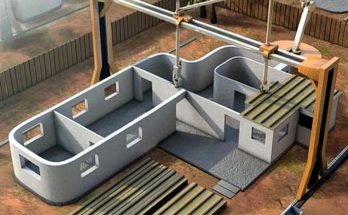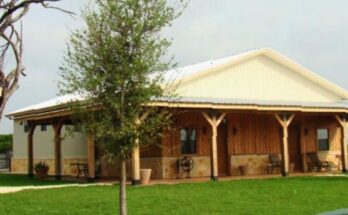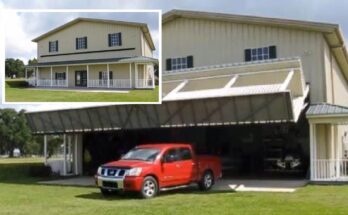Want a full grown tree inside your house? How about four flights of stairs to walk around the tree all the way to the top?
The house was designed by Aibek Almassov, a Kazakh architect. I though about giving you guys a Pliny-esque account of how in the strange and foreign land of Kazakhstan they build in this style, but for that you might re-watch The Man Who Would Be King (although that’s Kafiristan rather than Kazakhstan).
Apparently, although this glass concept house was not developed originally because funding fell through, it has a new investor — a solar panel company.
The views of this concept house are 360 degrees, as you can see, and daylight would be, it seems, more or less unmodified inside the structure. The tree would probably thrive in its warm, sunny habitat. People might invest in sleep masks, though.
What do you think of the idea of this concept house?
Rammed Earth: Incredible Textured Walls
How many of you have explored rammed earth as a building style for walls?
Although it is inexpensive and very sustainable, it is an uncommon building technology in the West. However, it is used in many other countries, especially countries where other building materials are scarce or unaffordable.
While rammed earth walls have a distinctive look many people find beautiful, rammed earth can also be used to make floors and foundations.
The drawbacks of rammed earth are that it requires powered tampers (or a significant effort in labor) and it can be damaged by water if it is not adequately protected from rain. In its favor though, is that it is impervious to fire, its strong and durable (not as strong as concrete, but still strong enough for domestic buildings), stores heat or cold well, breathes well (because of the clay) and is simple to make. It can be modified with Styrofoam or other insulation to keep in heat even better.
How is it made? A mixture of sand, gravel and clay, and moisture is poured into a mold or frame and is compacted with force. Lime, cement and asphalt emulsions are sometimes also added, as well as oxides to add various colors, or small objects to add texture.
Sustainability is another thing rammed earth has going for it. For solid masonry, rammed earth is possibly the lowest environmental impact building style.
The technology is ancient, but is currently experiencing a revival due to growing interest in sustainable building styles.
Family Vacation House is a Traditional Design, But It's Also a Modular Home
This prefab home was designed with tradition in mind. It was constructed decades ago by house designer (and furniture designer) Jens Risom, after renting for years on a small, undeveloped island off of Rhode Island.
It was designed partly as a challenge, and partly out of a desire for tradition. The architect had been reading architectural magazines say that a summer house couldn’t be built for under $25,000, and he wanted to show that he could do it. Prefabrication was part of this economizing. On the other hand, he had been renting on Block Island with his family for years, and when he found a nice plot, he wanted to build something like the A-frame’s he had been in as a kid in Denmark.
He was also influenced by his architect father and his ideas about stamped-earth building.
Some notable features of this design: well, besides the location, it has a 20-foot ceiling, cedar shingles, and a wall of glass facing north (replaced recently with safety glass).
The yard is surrounded by low stone fences, which is common to the island.
It was built using prefab in an era when modular homes were not usually held up as ideals of style. The home designer researched various modular home building kits of parts, and found one that had his requirements (Stanmar, our of Massachusetts). The parts were brought in by truck and then by tug boat, then by flatbed on the island. Photos by Floto + Warner.



